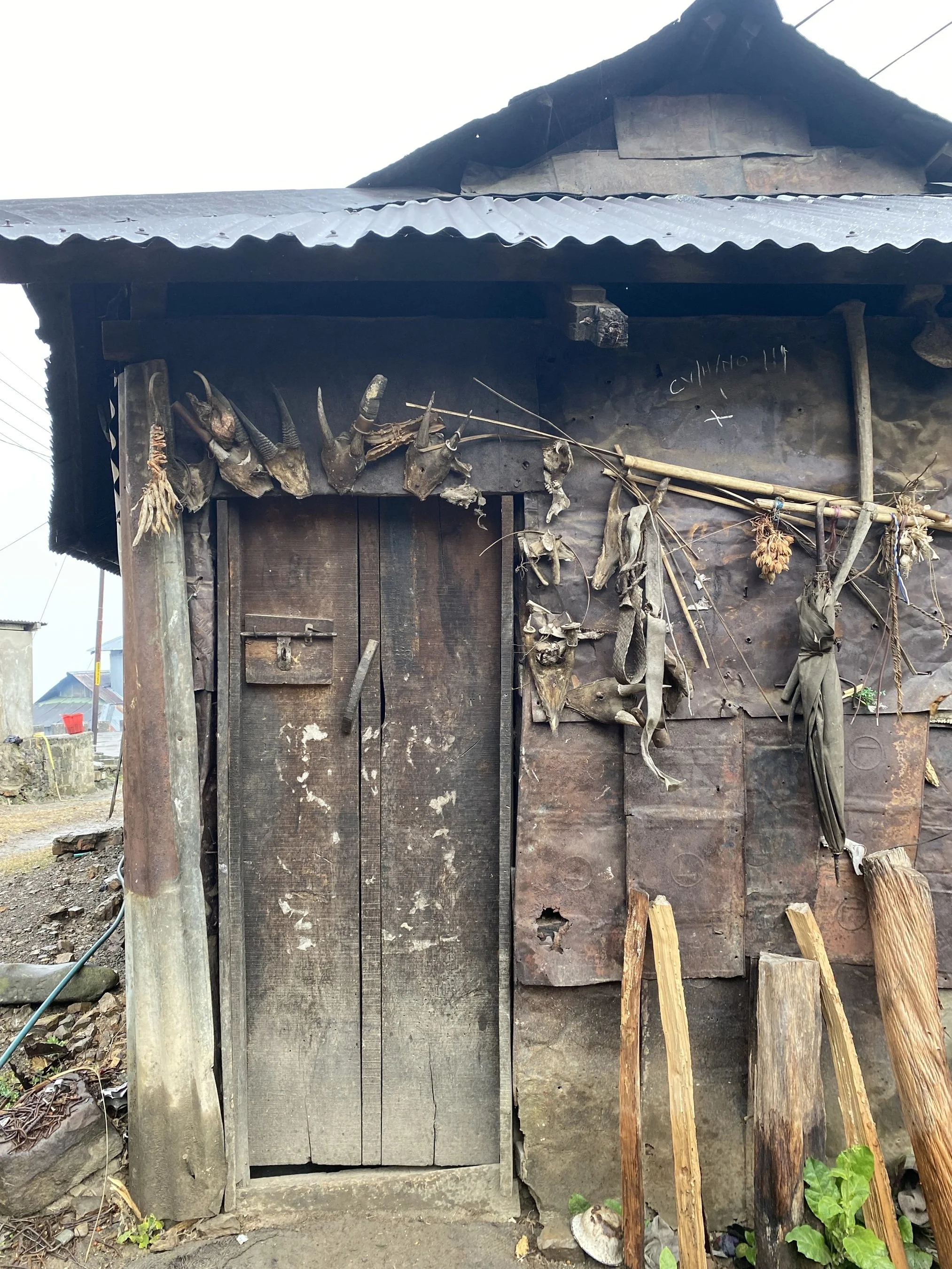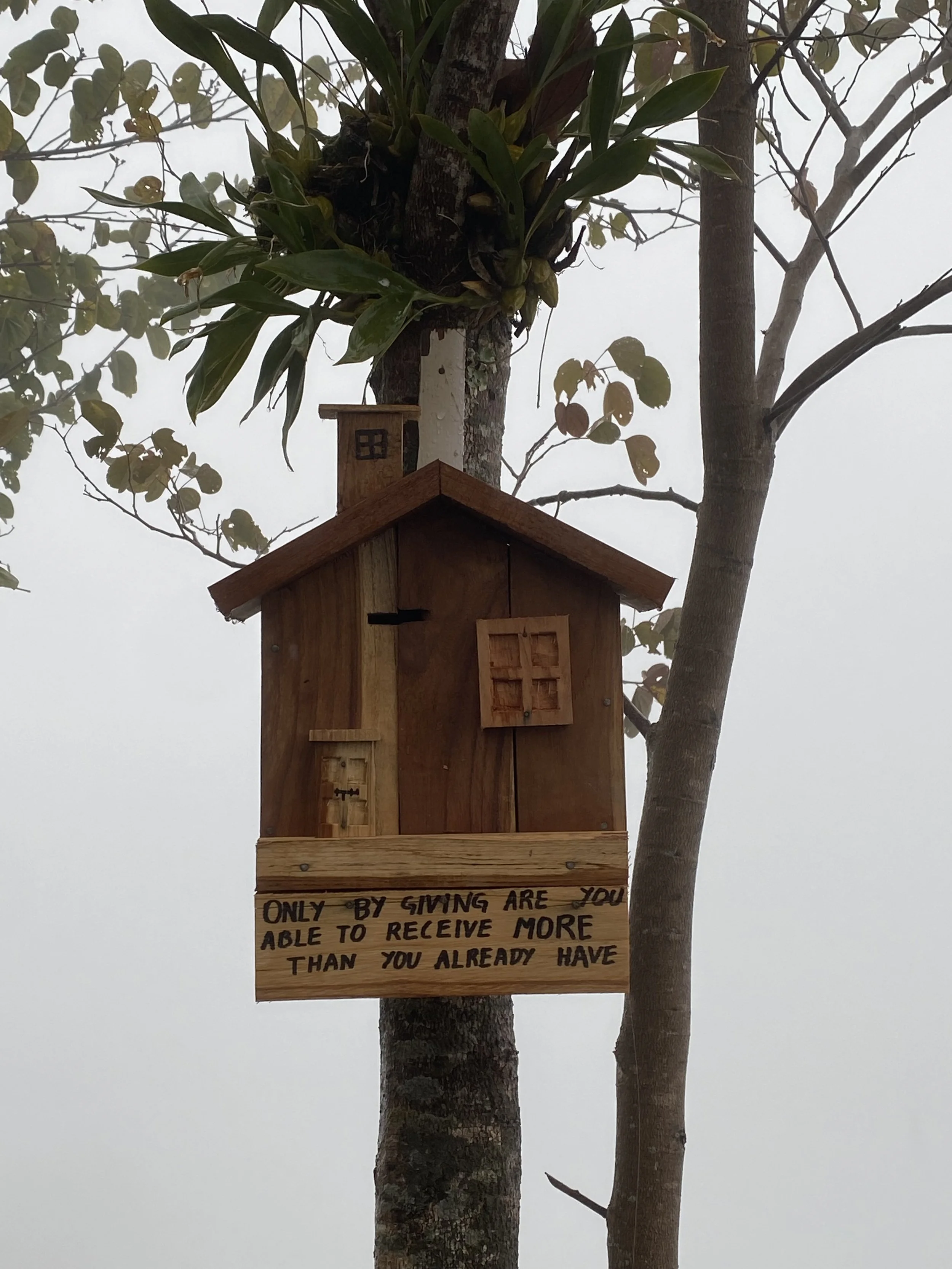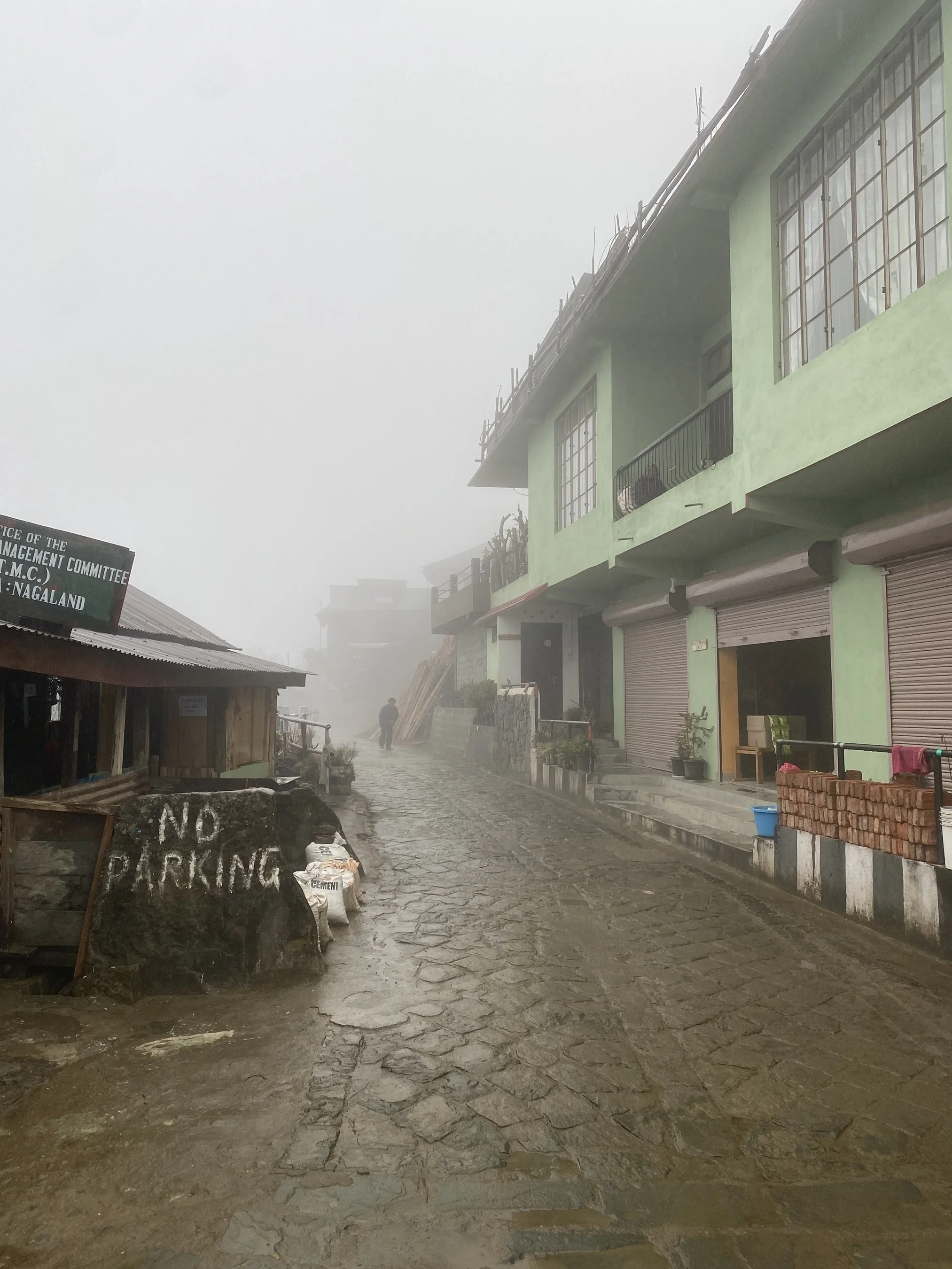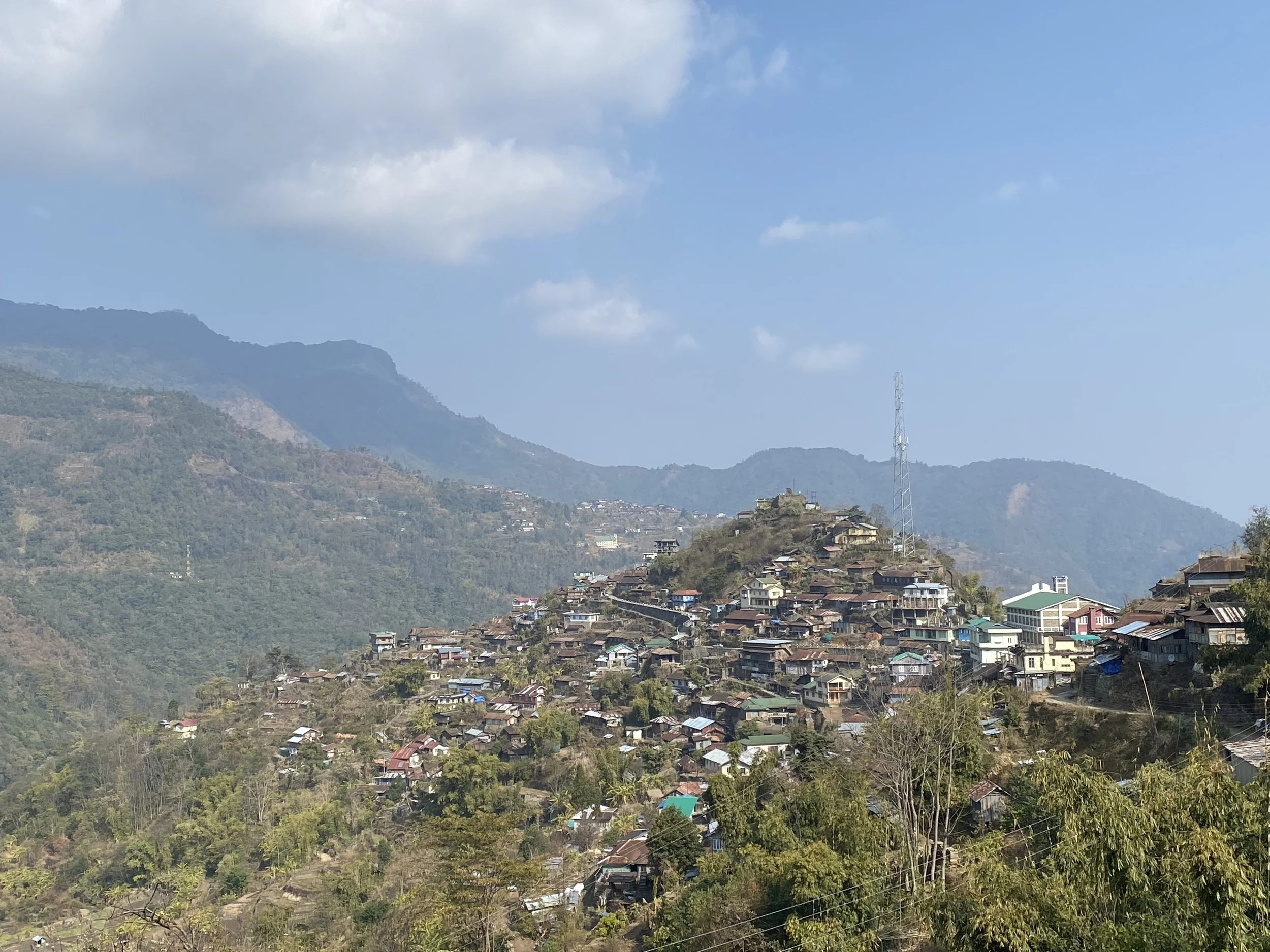The Only Tourist in Khonoma
Photo: Karan Madhok
Photo Essay: ‘I’m still feeling the nasha of this place the next morning; it’s a glow of inner joy, a celebration of each scintilla of being alive. I feel the feathery wafts of mountain breeze, see the clear horizon appearing after the night’s downpour, and watch farm animals grazing on grass, soaking in the morning sun.’
In early 2022, I took my first trip to Nagaland as part of my research travels for my book Ananda: An Exploration of Cannabis in India (Aleph Book Company, 2024). The book deals with the complex relationship of many of India’s communities with cannabis, and this trip—highlighted in the chapter ‘Nasha’—dove into themes of addiction, dependency, bliss, travel, and social groups formed around the ritualistic use of the substance.
Towards the end of my time in Nagaland, I decided to take a short trip to explore Khonoma, a small tourist village close to the state’s capital, Kohima. The following essay—which incorporates much of the corresponding section published in Ananda—recalls that trip, along with a collection of mostly unpublished photographs I took over the time.
I take a taxi from Kohima on a rocky, broken mountain road, up to the village of Khonoma. Even in the expansive list of terrible Indian roads I’ve experienced, this little stretch might be one of the worst. Then, it begins to rain, and the rain turns into a pouring thunderstorm. For the next hour, there’s loose gravel, muddy puddles, and many precarious twists and turns on the highway, alleviated only by puns and advice plastered on billboards about safe driving by the Border Roads Organisation [BRO].
Photo: Karan Madhok
But, by the time I arrive in Khonoma, the rain slows into a drizzle, and soon, gives way to an enchanting afternoon mist. Tucked between thick forests and grand steppes of paddy fields, Khonoma takes pride in calling itself the first “green village” of Asia, where conservationists and village elders created protected areas to ban hunting and industrial logging to maintain the region’s ecological balance. The jhum cultivation system (or shifting system) is popular here, as the naturally grown alder trees are pollarded, cutting the tree tops to burn vegetation on land, before a new patch of land is used for the next cultivation cycle. Khonoma is also famed for the 1879 anti-colonial uprising, which is known as the ‘last effort to remove the British invasion from the Naga Hills’.
Today, Khonoma is one of the most popular destinations in Nagaland for visitors hoping to experience a (manufactured-for-tourists) quaintness of Naga village life. And in my desperation to take a break from the rumble and dreck of civilization, this trip is exactly what I need. The afternoon walk around the village is shrouded in a silent fog, disturbed only occasionally with croaking roosters and trees shrugging off leftover raindrops. All around Khonoma, there are many more restless animals in their pens: grunting pigs and mooing cattle. Many of the homes here are made of wood, bamboo, or held together by large metal sheets. I walk a little bit further to the village centre, and to the biggest, grandest building around: the 125-year-old Baptist church. Then, a little further, is the only structure to match it: the local Catholic church.
I don’t know how much time has passed before I realize that this is one of the greatest walks I’ve ever taken.
Today, I’m the only tourist in this village.
Whenever I get an opportunity to spend time away from the stress of urban civilization, I inevitably think about loss. The loss of silences around the country, around the world. As someone who frequents the Garhwal Himalayan region, I have hoped to be more aware of my natural surroundings, to at least have good intentions for conservation. But there’s hardly a more addictive drug in the world than capitalism, and it’s difficult for most of us to undo the comforts of what our civilization deems to be ‘progress’: better roads, bigger structures, everything electrified, everyone connected.
Inevitably, I begin to wonder what the trade-off would’ve looked like for me. Was it better for me to be raised in an urban(ish) setting, with access to a good education, with hyper-connectivity to the rest of the world? Or would it have been a better life to be raised far away from this so-called civilization, more in sync with the natural environment?
Photo: Karan Madhok
Could I even survive without the comforts of the modern age? I can’t chop wood. I can’t raise a pig and slaughter it when it’s necessary. I have no skills of realizing harvest times and strategies. I can hardly build a bonfire, or hammer together logs to construct shelter for myself. My palms aren’t coarse with the self-sufficiency that comes with manual work. The only thing I have to show of my labour is the back that grows sore after hours of sitting in front of a computer screen.
Ultimately, the potential of choosing an alternative life is a meaningless thought experiment, because without the background that I was nurtured in, I wouldn’t even be in a position to have the time and privilege to contemplate these scenarios. I wouldn’t be me—the person who fathoms the option of ‘returning to nature’. I’m nothing but a tourist here, a visitor who enjoys a few days in a comfortable village, pumps a few rupees into the local economy, and then, leaves.
There’s hardly a more addictive drug than capitalism, and it’s difficult for most of us to undo the comforts of what our civilization deems to be ‘progress’: better roads, bigger structures, everything electrified, everyone connected.
The choice exists only because the choice has already been made.
There is a storm after sunset, followed by a cloudy, overcast night, followed by a brief power cut. I sit in the darkness, alone in a common lobby area of my homestay. There are no outside lights. The night’s bonfires haven’t yet been lit. This darkness is unlike any darkness I’ve ever known.
I’m still feeling the nasha of this place the next morning; it’s a glow of inner joy, a celebration of each scintilla of being alive. I feel the feathery wafts of mountain breeze, see the clear horizon appearing after the night’s downpour, and watch farm animals grazing on grass, soaking in the morning sun.
My long walks around Khonoma take me to the ‘Hobbit’ themed homestay, to the churches, a small war memorial, and back to the only little cafe in town, where I drink a soothing ‘pink’ tea. I feel no fatigue when I pack up again to take the cab down to Kohima, out of the mist of the village and back to the city.
Photo: Karan Madhok
Photo: Karan Madhok
Photo: Karan Madhok
Photo: Karan Madhok
Photo: Karan Madhok
Photo: Karan Madhok
***
Karan Madhok is a writer, journalist, and editor of The Chakkar. He is the author of Ananda: An Exploration of Cannabis In India (2024) and A Beautiful Decay (2022), both published by the Aleph Book Company. His work has appeared in Epiphany, Sycamore Review, Gargoyle, Fifty Two, Scroll, The Plank, The Caravan, the anthology A Case of Indian Marvels (Aleph Book Company) and The Yearbook of Indian Poetry in English 2022 (Hawakal). You can find him on Twitter: @karanmadhok1 and Instagram: @karanmadhok.









